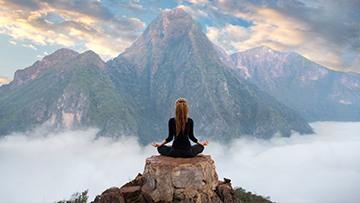Energy Flow and Meditation Postures
Key Tips to Enhance Your Meditation Practice:
Meditation is not just about sitting still; it's about cultivating a deep sense of inner peace and connecting with the flow of energy within your body. The way you sit or stand during meditation can significantly impact the flow of this energy, also known as prana or chi, throughout your body. By adopting the right meditation postures, you can enhance this energy flow, leading to a more profound and fulfilling meditation practice. Here are key tips to enhance your practice through effective meditation postures.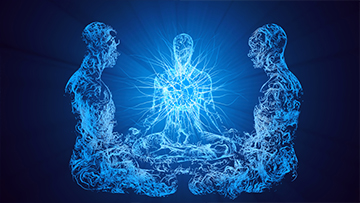
Understanding Energy Flow in Meditation
Energy flow is central to many meditation practices. It is believed that when energy flows freely through your body, it can help clear mental and emotional blockages, promote physical health, and deepen your meditation experience. Proper posture supports this flow by aligning the body and opening energy channels.
Key Meditation Postures for Optimal Energy Flow
-
Cross-Legged Position (Sukhasana):
Tips: Sit on a cushion to elevate your hips above your knees. This alignment reduces strain on your back and legs, allowing energy to flow more smoothly.
-
Kneeling Position (Seiza):
Tips: Use a cushion or meditation bench to support your weight and reduce pressure on your knees and ankles. This support helps maintain proper alignment and comfort.
-
Chair Sitting:
Tips: Ensure that your back is straight, shoulders are relaxed, and your head is aligned with your spine. Use a cushion for additional lumbar support if necessary.
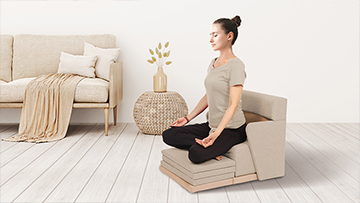
-
Lying Down (Savasana):
Tips: Place cushions under your head, neck, and knees to maintain a neutral spine and enhance comfort. Be mindful to stay awake and focused to avoid falling asleep.
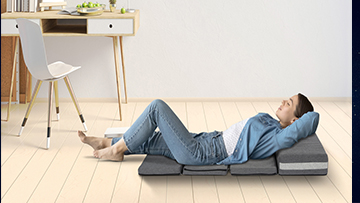
-
Standing Meditation (Zhan Zhuang):
Tips: Stand with feet shoulder-width apart, knees slightly bent, and arms relaxed at your sides. Focus on the sensation of the ground beneath your feet and the energy rising through your body.
Enhancing Energy Flow Through Posture
-
Align Your Spine:
-
Relax Your Shoulders and Chest:
-
Ground Your Base:
-
Breathe Deeply:
-
Use Props for Support:
Tips for Maintaining Proper Posture
-
Regular Check-ins:
-
Stretch and Strengthen:
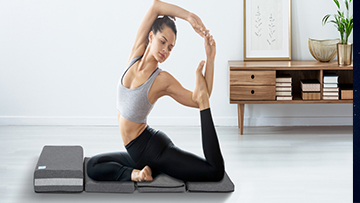
-
Mindful Awareness:
Additional Meditation Postures for Enhanced Energy Flow
Half Lotus Position (Ardha Padmasana)
The half lotus position is a simplified version of the full lotus, where one foot is placed on the opposite thigh, and the other foot is tucked under the opposite thigh.
Benefits:
- Balanced Stability: Provides a stable base for meditation with less strain than the full lotus position.
- Improves Flexibility: Helps gradually increase flexibility in the hips and knees.
- Easier Transition: A good intermediate step towards achieving the full lotus position.
Tips:
- Use a cushion to elevate your hips above your knees to improve comfort and alignment.
- Gradually ease into this posture to avoid strain or injury.
Burmese Position (Sukhasana Variation)
The Burmese position is similar to the cross-legged position but with both feet resting on the floor in front of each other instead of crossing the legs.Benefits:
- Comfortable for Beginners: Easier on the knees and hips compared to the full or half lotus positions.
- Supports Longer Sessions: Allows for prolonged sitting with minimal discomfort.
- Encourages Natural Alignment: Promotes a natural curve in the spine and helps maintain proper posture.
Tips:
- Elevate your hips with a cushion to enhance comfort and alignment.
- Ensure that your sit bones are evenly grounded to maintain stability.
Reclining Position (Reclined Bound Angle Pose)
This posture involves lying on your back with the soles of your feet together and knees falling open to the sides, supported by cushions.Benefits:
- Deep Relaxation: Promotes deep relaxation and stress relief.
- Opens Hips: Gently stretches and opens the hips.
- Supports Restorative Practices: Ideal for restorative meditation and guided relaxation.
Tips:
- Use plenty of cushions to support your knees and back for comfort.
- Be mindful to stay awake and focused to avoid falling asleep.
Corpse Pose with Props (Supported Savasana)
Lying down in the Savasana posture, also known as the corpse pose, with additional props can enhance relaxation and energy flow.Benefits:
- Maximizes Comfort: Provides full-body support, promoting complete relaxation.
- Releases Energy Blockages: Helps release energy blockages and facilitates deep meditation.
- Ideal for Deep Rest: Perfect for restorative practices and guided body scans.
Tips:
- Place cushions under your head, neck, and knees to maintain a neutral spine and enhance comfort.
- Use a weighted blanket for added grounding and a sense of security.
Enhancing Energy Flow Through Meditation Techniques
-
Visualization:
-
Mantras and Chanting:
-
Breath Control (Pranayama):
-
Body Scanning:
Advanced Tips for Maintaining Proper Posture
-
Dynamic Adjustments:
-
Progressive Relaxation:
-
Frequent Breaks:
-
Environment Optimization:
